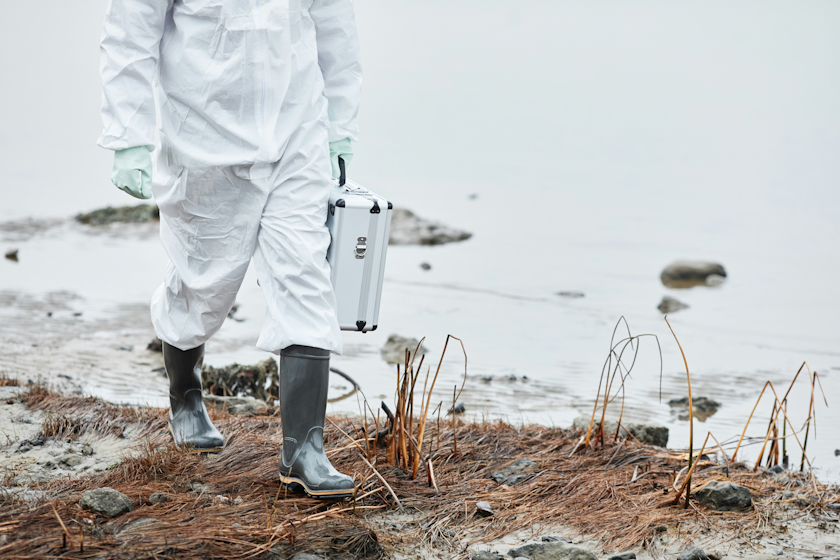The Future Is WOW #40: Safety Gains, Compliance Pains
Workplace injuries may be trending down (at least according to The Travelers Companies), but with strain on the Texas power grid, PFAS pollution rising, and the same hazards topping OSHA’s most-cited list year after year, there’s still plenty to keep our eye on.
PFAS: A growing compliance and cleanup crisis
PFAS, better known as “forever chemicals”, have been used for decades in everything from firefighting foam to nonstick coatings. But, with dangerous concentrations turning up worldwide, a wave of restrictions is coming into force across Europe and the U.S.
Starting in January, the EU will impose stricter PFAS limits, impacting 2,300+ sites. Sadly, it comes too late for the Saint-Louis region in France, where authorities recently imposed the country’s largest-ever tap water ban after unsafe levels were found in the drinking supply.
Across the continent, the financial and legal costs are mounting. Italy just sentenced chemical plant executives to up to 17 years in prison for large-scale water pollution, awarding €57 million in damages. Meanwhile, in the Netherlands, the national cleanup bill is projected in the billions. And if emissions aren’t curbed, EU-wide estimates put the cost at nearly €2 trillion.
Stateside, it’s a similar story. A Waterkeeper Alliance study found PFAS in 98% of tested U.S. water sites, with South Carolina’s Pocotaligo River among the most contaminated. Industrial wastewater and legacy military pollution are the likely culprits—and cleanup is slow and costly.
PFAS pollution shows how environmental risk can become a costly operational crisis if left unchecked. Now’s the time to audit PFAS exposure across your operations, invest in safer processes, and stay ahead of compliance.
And compliance isn’t the only pressure point for manufacturers. Resilience in the face of physical threats is also moving up the agenda.
From gridlock to grid resilience in Texas
Following a decade of devastating blackouts in Texas, Senate Bill No. 75 is now making its way through the Texas legislature, and it could mark a turning point for the state’s electric grid.
The bill calls for the creation of a Texas Grid Security Commission—a cross-sector team of emergency responders, utility providers, and regulators tasked with conducting a full-spectrum vulnerability check of the state’s energy systems, from past failures to future threats.
Starting in 2026, the state will run mandatory grid simulation exercises across summer heatwaves and winter storms, with resilience benchmarks tied directly to essential services like healthcare, water, telecoms, and transportation.
It’s a systems-level shift aimed not just at recovery, but preparedness.
Workplace injuries are down, but new risks are emerging
The 2025 Injury Impact Report, from The Travelers Companies, Inc., brings good news: workplace injuries have dropped over the past decade, with workers’ compensation claims down from 1.4 million to 1.2 million. But three shifts in the data remind us to be vigilant:
- Constant job churn means a steady flow of new workers. And these inexperienced hires are driving incidents, accounting for 36% of injuries and 34% of claim costs.
- Nearly a quarter of U.S. workers will be 55 or older by 2033. Over the past five years, employees aged 50+ made up 41% of injuries, with those 60+ representing 16%. They’re hurt less often but need more time (and money) to recover.
- Recovery times are stretching. From 2020 to 2024, injured workers missed an average of 80 days, seven more than before. For employees aged 60+, that jumps to 97 days, up 14 days from pre-pandemic levels.
Whilst fewer injuries are good news, the shifting workforce and longer recovery times mean organizations can’t afford to ease up on prevention and training. And you only need to look at OSHA’s most-cited list to see that the job is far from done.
How to make use of OSHA’s naughty list
OSHA’s 10 most cited standards don’t change much from year to year. Fall protection, hazard communication, lockout/tagout, machine guarding, and powered industrial vehicles consistently top the list. The reason is less to do with knowing, or not knowing, the rules, and more to do with how these rules hold up under real-world pressure.
Think of hazard communication. Your team might have SDS binders tucked neatly in a back office — but what if workers can’t find the right sheet mid-shift? Factor in labor shortages, seasonal staff, and tight production timelines, and even well-written procedures can slip.
So what can you do? Use each citation as a chance to uncover blind spots. Maybe your PPE isn’t easy to access. Maybe your LOTO training isn’t sticking. That’s your cue to take action: because when safety becomes part of your culture, and not just part of your compliance checklist, you don’t just avoid citations, you protect your people.
Final thought
Whilst OSHA’s naughty list might not change much year to year, this month’s headlines show that risk is evolving, and organizations need to keep up.
For manufacturers, that means taking a proactive stance—keeping up with compliance, investing in safer processes, training every employee (new or veteran), and building resilience into both infrastructure and culture. Because the cost of reacting late will be far higher than the cost of acting now.
To stay up to date with industry and EHS news in the U.S. and Europe, subscribe!
Sign Up for email updates about our latest projects, articles and online events.





